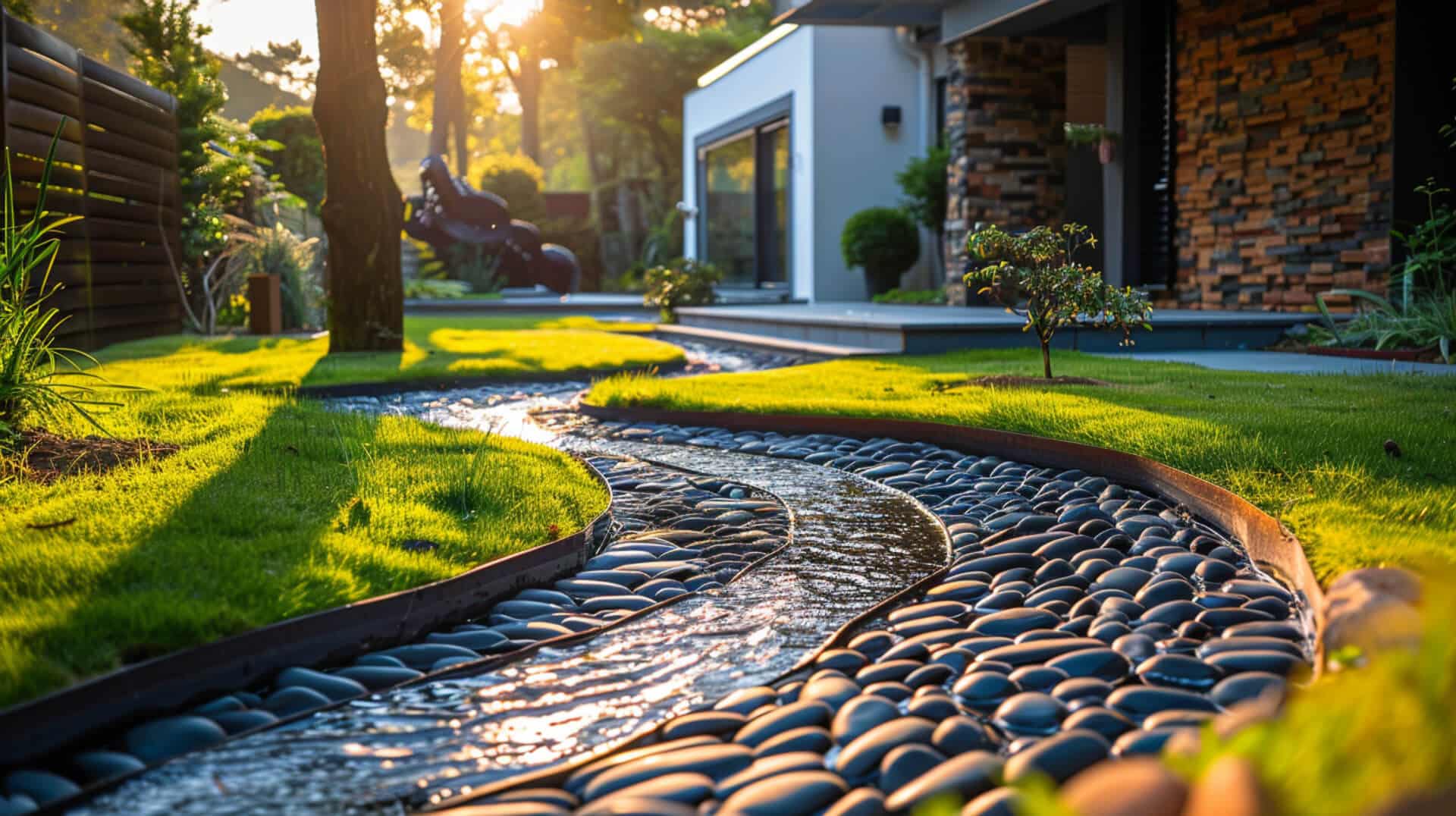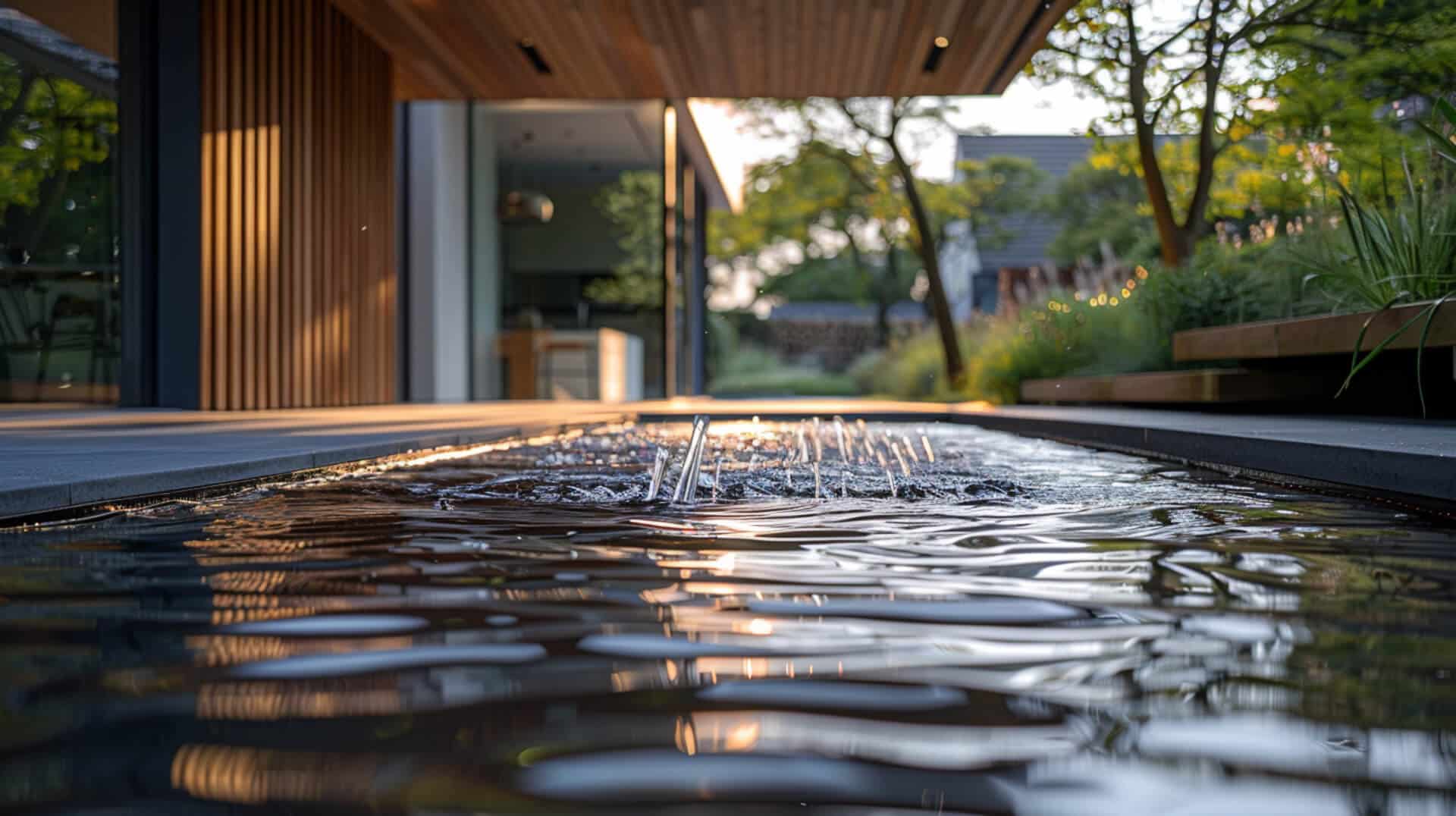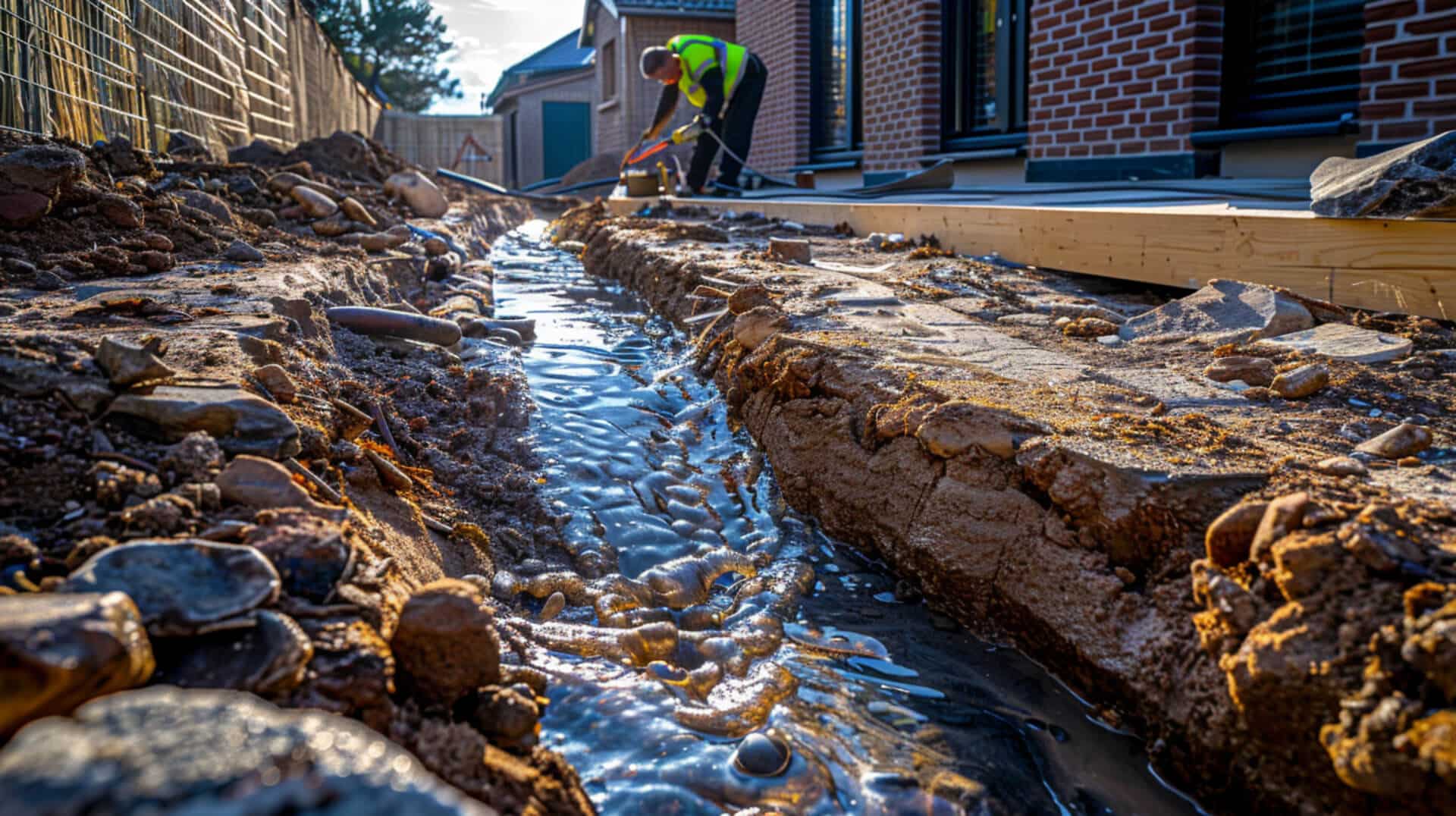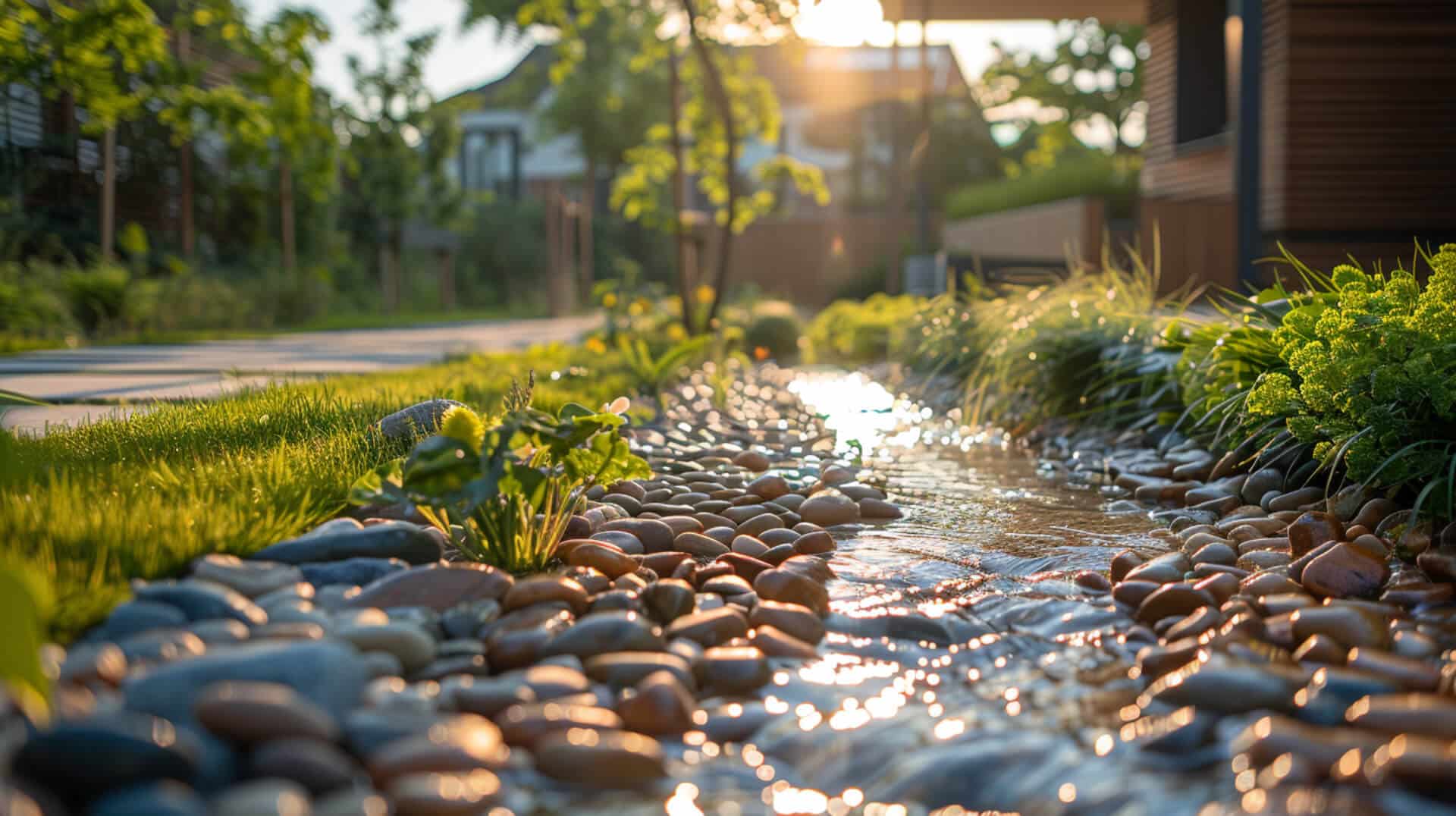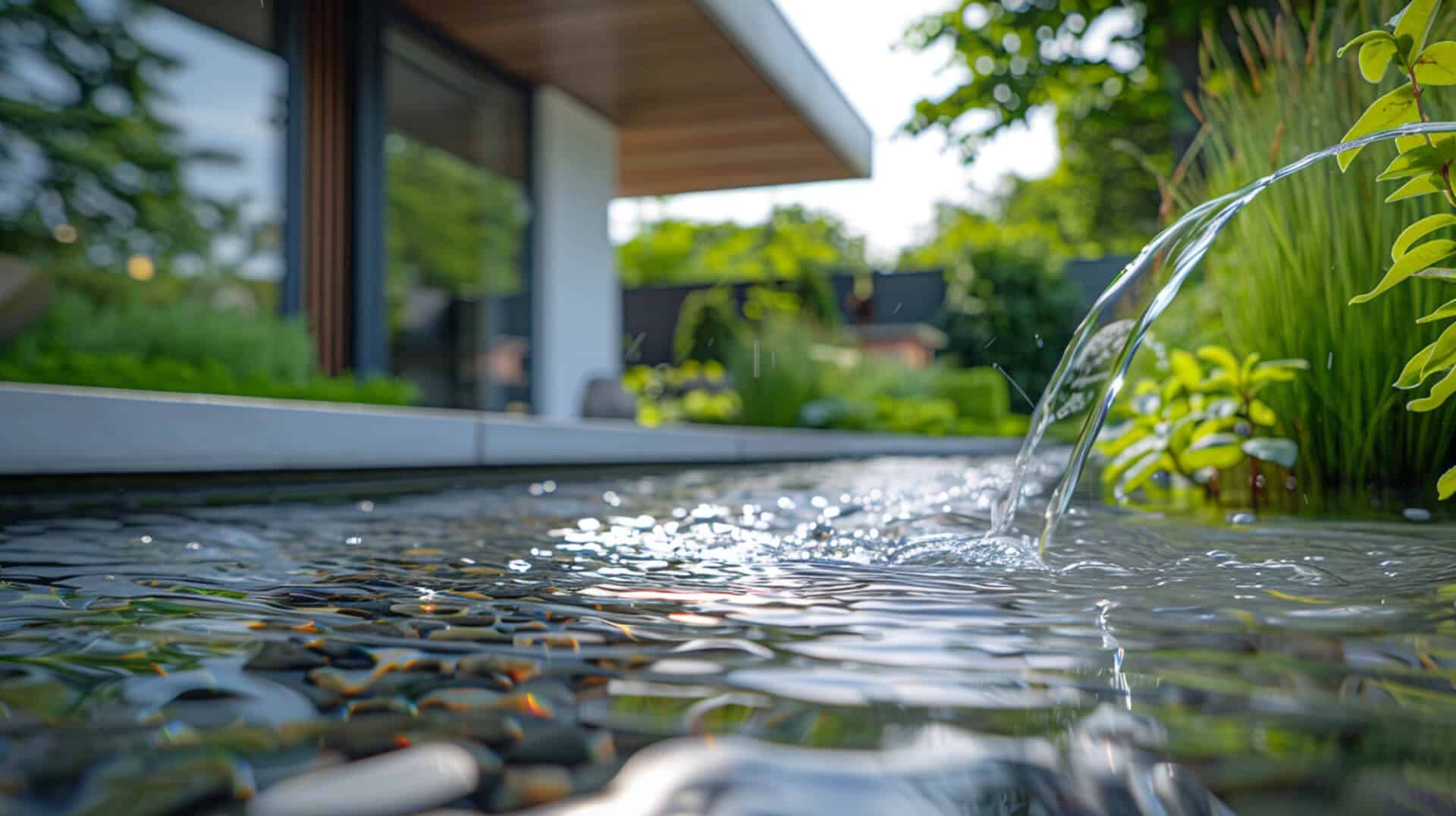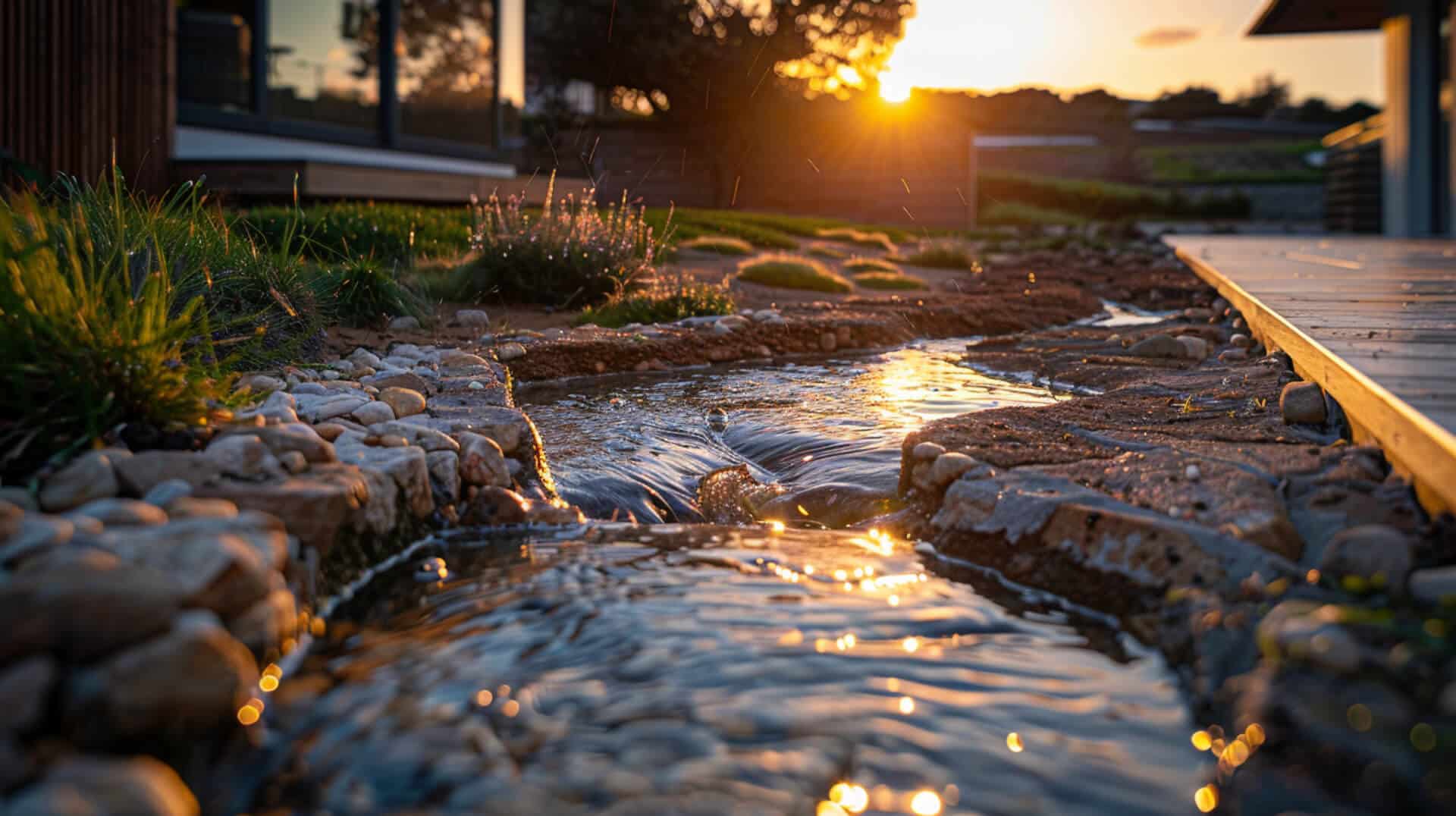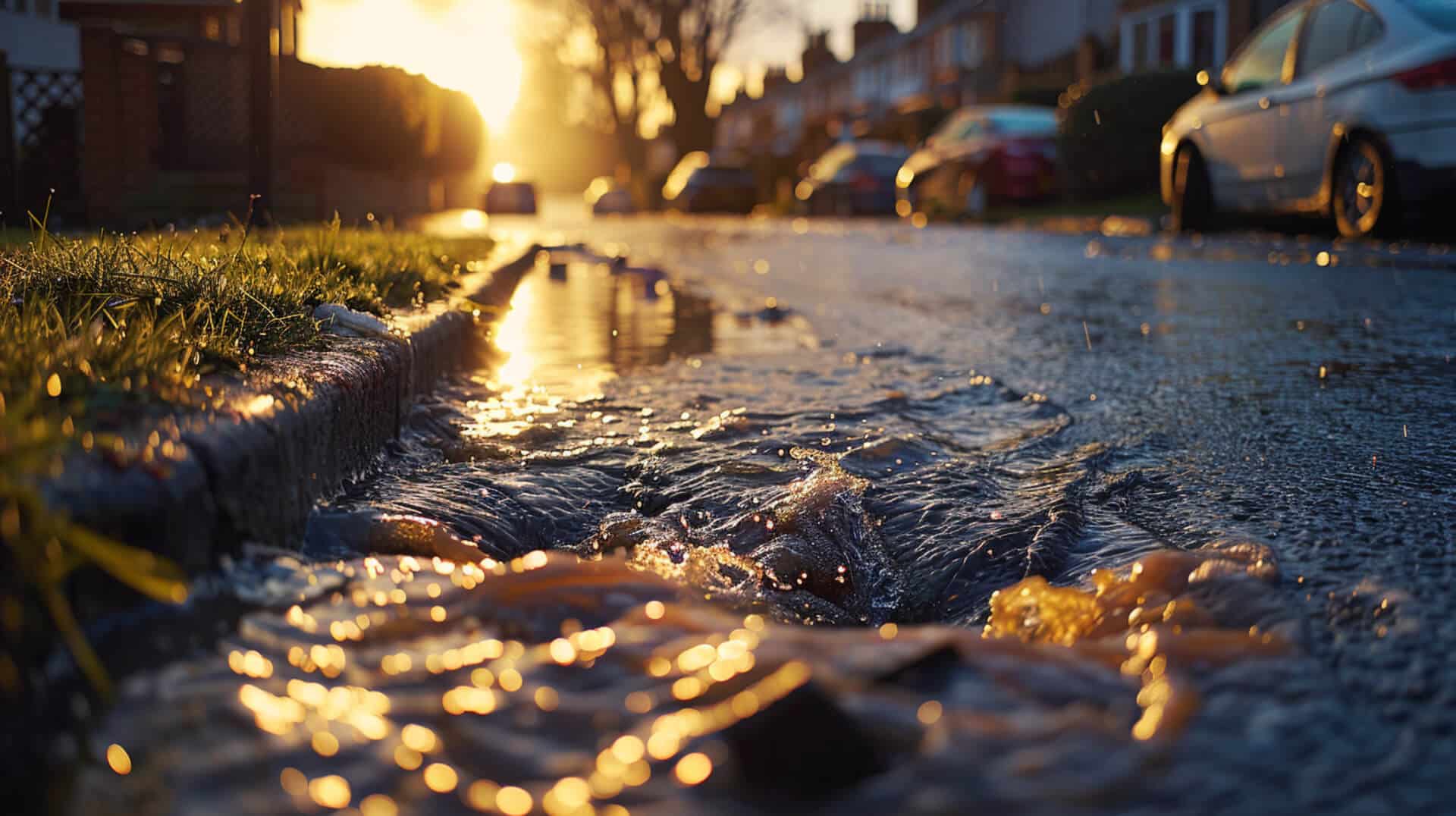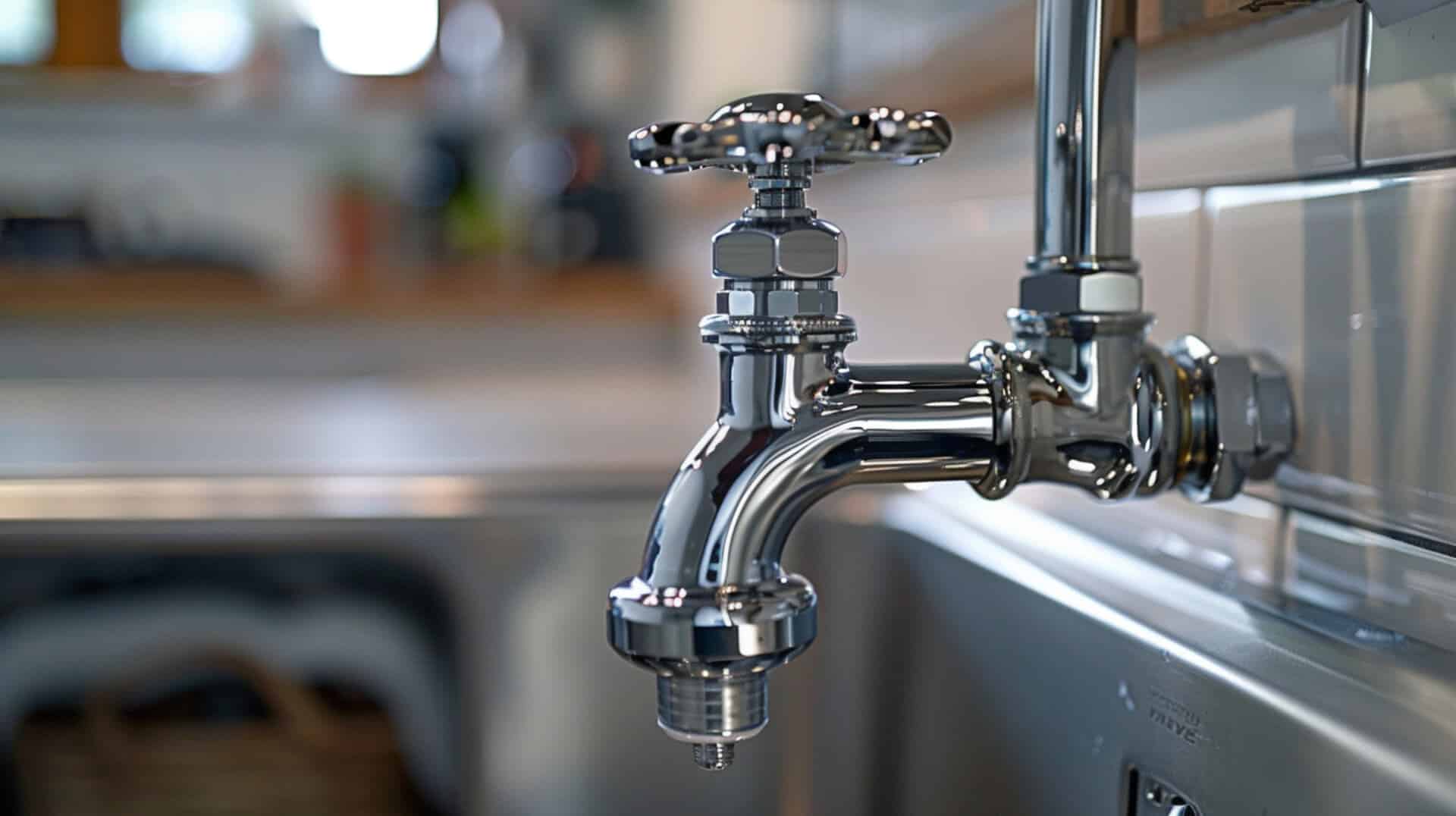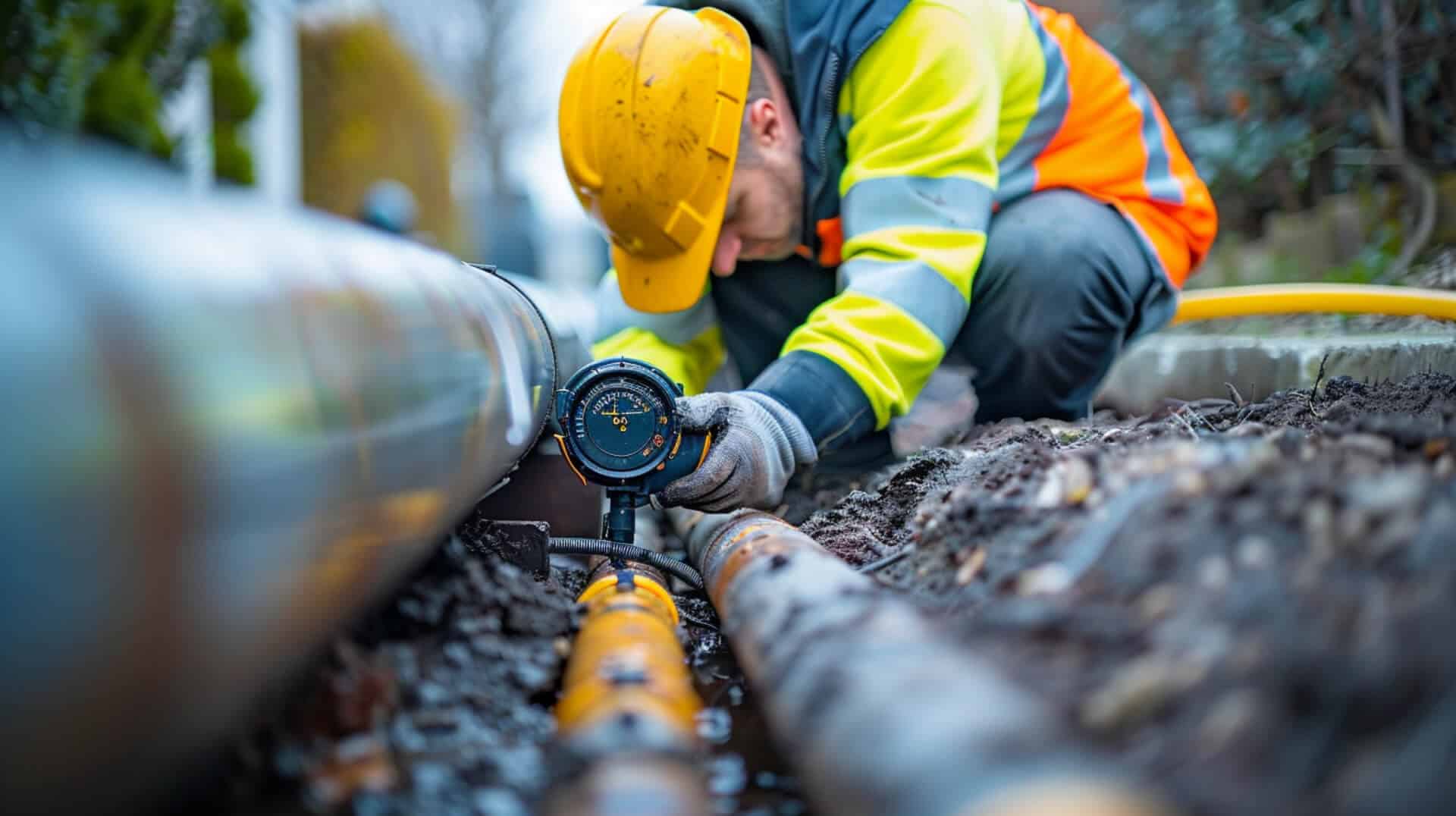 What Are Drainage Swales And Contouring Services
What Are Drainage Swales And Contouring Services

Drainage swales and contouring services are integral components of landscape management, designed to manage water flow, reduce erosion, and support sustainable land use. These systems are strategically implemented to enhance the natural hydrology of an area, offering a blend of practicality and environmental stewardship.
What Are Drainage Swales?
Drainage swales are shallow, vegetated channels that serve multiple functions in water management. They facilitate water infiltration, conveyance, and temporary storage, while also reducing erosion and pollutants. Swales are often incorporated into landscapes to recharge groundwater and protect the integrity of the terrain.
The Critical Role of Contouring Services
Contouring services shape the land to follow the natural contours of the terrain, optimising water retention and soil stability. This technique is essential for effective water management and erosion control, particularly in agricultural settings where it can enhance crop yields and conserve soil moisture.
Contribution to Sustainable Land Use Practices
By managing water flow and reducing soil erosion, drainage swales and contouring services contribute significantly to sustainable land use. They support the ecosystem by creating favourable conditions for local flora and fauna, and by maintaining soil health, they ensure long-term productivity of the land.
Effective Implementation
The effectiveness of drainage swales and contouring services is highly dependent on the specific environment. Urban, suburban, and agricultural landscapes can all benefit, but the design and application must be tailored to the unique characteristics of each setting to ensure optimal performance and sustainability.
Understanding the Basics of Drainage Swales
Drainage swales are a key component of sustainable water management systems. Unlike traditional piping systems, swales are shallow, vegetated channels that manage water runoff through natural processes. They are designed to slow down water flow, allowing for infiltration into the soil, which reduces erosion and philtres pollutants.
Distinctive Features of Drainage Swales
Swales are distinguished from other water management systems by their design and function. They are typically broad and shallow, with vegetation that aids in water filtration and conveyance. This design contrasts with hard-engineered channels or pipes that simply transport water away from a property.
Water Infiltration and Conveyance
The primary function of a swale is to facilitate water infiltration into the ground, which is essential for recharging groundwater and reducing surface runoff. Swales convey water more slowly than pipes, which minimises soil erosion and allows for natural filtration processes to occur.
Importance of Vegetation
Vegetation is crucial in swale design for several reasons. Plants stabilise the soil, reduce the velocity of water flow, and their roots philtre pollutants. This natural process supports the ecosystem by improving water quality and providing habitat for local wildlife.
Implementation Considerations
Property owners should consider implementing drainage swales when seeking an environmentally friendly solution to water management. Swales are particularly beneficial in areas where water conservation is a priority or where there is a need to manage stormwater runoff sustainably. They are most effective when integrated into the landscape design from the outset, ensuring that they complement the natural topography and environmental conditions of the area.
The Role of Contouring in Land Management
Contouring is a land management practice that works in tandem with drainage swales to optimise water management. By shaping the land to follow the natural contours, contouring enhances the efficiency of swales in managing water runoff and preserving soil integrity.
Complementary Benefits for Water Management
Contouring services complement drainage swales by directing water flow across the landscape in a controlled manner. This synergy between the two practices ensures that water is distributed evenly, reducing the risk of flooding and allowing for better water infiltration into the soil.
Erosion Control and Soil Health
The strategic shaping of land through contouring significantly aids in erosion control. By following the natural elevation lines of a landscape, contouring reduces the velocity of water runoff, which in turn minimises soil displacement. This practice not only preserves topsoil but also promotes healthier soil by maintaining its structure and nutrient content.
Sustainability in Land Development
Contouring is recognised as a sustainable approach to land development due to its minimal impact on the environment. It utilises the existing topography to manage water resources effectively, thereby reducing the need for artificial and potentially disruptive interventions.
Optimal Application of Contouring Services
Contouring services are most impactful when applied in agricultural settings, where they can enhance crop yields by improving water retention and soil conditions. They are also beneficial in urban and suburban developments for managing stormwater and integrating green infrastructure into the landscape.
Design Principles for Effective Swales and Contouring
When creating drainage swales, several design principles are essential to ensure their effectiveness in water management and erosion control. These principles are grounded in the understanding of hydrology and landscape architecture.
Key Design Considerations
The design of drainage swales should prioritise broad and shallow formations. This shape maximises the surface area for water infiltration and allows for easier integration of vegetation. The vegetation plays a crucial role in stabilising the soil and filtering pollutants from the water.
Role of Check Dams and Berms
Check dams and berms are integral to swale functionality. They act as barriers that slow down water flow, facilitating sediment settlement and further water infiltration. This process is vital for preventing erosion downstream and enhancing the swale’s water purification capabilities.
Preference for Broad, Shallow Construction
A broad, shallow design is preferred for swales as it provides a greater area for water to spread out and infiltrate. This design also reduces the velocity of water flow, which is a key factor in minimising erosion.
Incorporating Liners in Swale Designs
In areas where soil contamination is a concern, or where water seepage needs to be controlled, liners may be necessary. Liners prevent pollutants from leaching into the groundwater and ensure that water is directed towards intended recharge zones or treatment areas.
Applications Across Different Environments
Drainage swales and contouring services are versatile solutions applied across various environments, each offering unique benefits tailored to the landscape’s needs.
Urban and Suburban Settings
In urban areas, swales serve as critical components in managing stormwater runoff, reducing the burden on sewer systems, and improving water quality by filtering pollutants. Suburban landscapes benefit from swales and contouring by integrating natural water management into the aesthetic of the community, often enhancing property values and providing recreational green spaces.
Agricultural Land
Agricultural settings utilise contouring and swales to prevent soil erosion, enhance water conservation, and improve crop yields. By following the natural contour lines of the land, farmers can maximise the use of rainwater and reduce the need for artificial irrigation.
Adapting to Landscape Requirements
These systems are adaptable to various landscapes due to their design flexibility. Swales can be customised in depth and vegetation type to suit the specific water management needs of an area, whether it’s a high-rainfall region or a drought-prone zone.
Environmental Challenges
Different environmental contexts present unique challenges. Urban areas may face space constraints, while agricultural lands might require extensive planning to avoid disrupting existing farming practices. In all cases, careful consideration of the local ecosystem and hydrology is essential to ensure the successful implementation of swales and contouring services.
Installation Process and Construction Techniques
The installation of drainage swales and the construction of contour landscapes are meticulous processes that require careful planning and execution. These techniques are essential for effective water management and erosion control on your property.
Steps in Swale and Contour Landscape Installation
- Outline the Shape: The first step involves outlining the intended shape of the swale or contour lines on the landscape. This is typically done with stakes and string to mark the area clearly.
- Remove Sod: If grass or other vegetation is present, it is removed to prepare the soil.
- Layer the Base: A base layer of gravel or other permeable material is laid down to facilitate drainage.
- Compact and Shape: The base is then compacted, and the soil is shaped to match the desired contour, ensuring proper water flow and distribution.
- Apply Topsoil: After shaping, topsoil is applied to provide a fertile layer for vegetation.
- Plant Vegetation: The final step is planting appropriate vegetation that will stabilise the swale or contour and aid in water infiltration.
Critical Role of Soil Management
Soil management during construction is critical to prevent erosion and ensure the stability of the swale or contour. This includes maintaining the soil’s quality, managing its moisture content, and ensuring the angle of repose is appropriate for the intended design.
Engaging Professional Contouring Services
Professional contouring services should be engaged when the project’s complexity exceeds the skill level of the property owner or when specialised equipment is required. Professionals can also provide valuable insights into the local environment and regulatory requirements, ensuring the project’s success.
Maintenance and Upkeep of Swales and Contoured Landscapes
Proper maintenance is crucial for the longevity and effectiveness of drainage swales and contoured landscapes. Regular upkeep ensures these systems continue to manage water efficiently and prevent soil erosion.
Routine Maintenance Activities
For drainage swales to function optimally, routine maintenance activities are necessary. These include:
- Litter Removal: Keeping the swale area free of debris that can obstruct water flow.
- Grass Cutting: Regular trimming of vegetation to maintain the health of the swale and prevent overgrowth that can impede water infiltration.
- Clearing Blockages: Inspecting and removing any obstructions in the swale, such as sediment build-up or fallen leaves, which can cause water to back up.
Ensuring System Longevity
To ensure the longevity of these water management systems, property owners should:
- Conduct Regular Inspections: Frequent checks, especially after heavy rainfall, can help identify and address issues early on.
- Repair Damages Promptly: Addressing any damage to the swale structure, such as erosion or berm breaches, can prevent more significant problems.
Importance of Regular Inspection
Regular inspection is vital to prevent blockages that can lead to water overflow and potential property damage. It also helps in identifying areas that may require reinforcement or additional vegetation to improve water control.
Timing for Repairs
Repairs are most likely needed after extreme weather events or at signs of wear, such as visible erosion or vegetation die-off. Prompt repairs can prevent system failure and maintain the integrity of the landscape.
Ecosystem Benefits of Drainage Swales and Contouring
Drainage swales and contouring services offer significant advantages for local ecosystems. By mimicking natural processes, they provide a habitat for wildlife and support biodiversity.
Supporting Local Flora and Fauna
Swales, with their vegetated design, create microhabitats for various species. The plants used in swales attract pollinators, while the water bodies become a resource for birds and small mammals.
Enhancing Biodiversity
The integration of swales and contouring into landscapes contributes to biodiversity by connecting fragmented habitats. This connectivity allows species to migrate and interact, which is essential for maintaining healthy ecosystems.
Benefits for Soil Microorganisms
The soil within and around swales is rich in organic matter, which supports a diverse range of microorganisms. These organisms play a crucial role in nutrient cycling and soil fertility.
Observing Environmental Impact
The most significant environmental impacts of swales and contouring can be observed in areas where they have prevented soil erosion, improved water quality, and increased groundwater recharge. These benefits are particularly evident in agricultural landscapes where these practices have led to more sustainable land management.
Addressing Limitations and Overcoming Challenges
Drainage swales and contouring services are effective water management strategies, yet they come with certain limitations and challenges that require careful consideration.
Recognising the Limitations
Drainage swales are not universally applicable. They are less effective in steep terrains where water flow is too rapid for the swales to function properly. In densely built areas, space constraints may limit the size and number of swales that can be installed.
Mitigation Strategies for Difficult Terrains
In steep or densely populated areas, alternative solutions may be necessary. These can include:
- Terracing: Creating stepped levels on a slope to slow down water flow.
- Retaining Walls: Building structures to hold back soil and manage water runoff.
- Green Roofs: Installing vegetation on rooftops to absorb rainfall in urban settings.
The Importance of Awareness and Education
Educating property owners about the benefits and limitations of swales and contouring is crucial. Awareness can lead to better maintenance practices and informed decision-making about the most suitable water management solutions for a given property.
Considering Alternative Solutions
When swales and contouring are not viable, other water management practices should be explored. These may include rain gardens, permeable paving, or underground retention systems. It is essential to assess each property’s unique conditions to determine the most effective approach.
Economic Considerations and Cost-Effectiveness of Swales and Contouring
When considering the implementation of drainage swales and contouring services, property owners must weigh the initial investment against the long-term benefits. These sustainable water management practices not only contribute to environmental health but can also offer economic advantages.
Assessing Initial Costs Versus Long-Term Benefits
The initial costs for installing drainage swales and contouring landscapes can vary depending on the scale and complexity of the project. However, these costs are often offset by the long-term benefits, which include reduced need for expensive drainage systems, lower water bills due to improved natural irrigation, and potential increases in property value.
Incentives for Property Owners
Property owners may find economic incentives to invest in these systems, such as:
- Tax Credits: Some regions offer tax incentives for implementing green infrastructure.
- Grants: Environmental grants may be available to support sustainable land management practices.
- Reduced Insurance Premiums: Effective erosion control can lead to lower insurance costs.
Importance of Cost-Effectiveness
Cost-effectiveness is a crucial consideration in landscape management. Swales and contouring provide a return on investment through ecosystem services like water purification, flood mitigation, and soil preservation, which can save money in the long run.
Resources and Support for Funding
Property owners can seek resources and support for funding these projects from:
- Local Government: Information on zoning regulations and available incentives.
- Environmental Agencies: Guidance on best practices and potential funding sources.
- Agricultural Extensions: Assistance for rural landowners in implementing contour farming techniques.
Policy and Regulatory Frameworks Influencing Implementation
Understanding the policies and regulations that support the use of drainage swales and contouring services is crucial for compliance and successful implementation.
Impact of Local and National Guidelines
Local and national guidelines significantly impact the design and installation of drainage swales and contouring systems. These regulations may dictate:
- Design Specifications: Ensuring that swales and contours meet certain dimensions and construction standards.
- Permit Requirements: Obtaining the necessary permits before construction can begin.
- Environmental Protections: Adhering to regulations that protect water quality and natural habitats.
The Crucial Nature of Compliance
Compliance with environmental standards is not only a legal obligation but also a commitment to sustainable development. It ensures that water management practices do not harm the ecosystem and that they contribute positively to the environment.
Policy Changes and Adoption of Practices
Policy changes can significantly influence the adoption of drainage swales and contouring practices. For instance, increased emphasis on green infrastructure can lead to more supportive policies, making it easier for property owners to implement these systems. Conversely, restrictive policies may limit their use or require more rigorous compliance measures. It is essential for property owners to stay informed about current regulations and any potential changes that may affect their land management strategies.
Key Takeaways for Land Management
For property owners, business owners, and facility managers, drainage swales and contouring services offer a multifaceted approach to land management. These practices not only enhance water management and soil conservation but also contribute to the aesthetic and ecological value of the property.
Transforming Land Management Through Sustainable Practices
The integration of drainage swales and contouring services can significantly transform land management by:
- Improving Water Efficiency: Optimising the use of natural rainfall and reducing the need for supplemental irrigation.
- Enhancing Soil Health: Preventing soil erosion and promoting nutrient retention, which is beneficial for both agricultural and landscaped areas.
- Supporting Biodiversity: Creating habitats for local wildlife and contributing to the overall health of the ecosystem.
Commitment to Sustainability
A commitment to sustainable practices is essential for future development, ensuring that land management strategies not only meet current needs but also preserve resources for future generations. Sustainable practices like swales and contouring help mitigate the impacts of climate change by improving water conservation and soil health.
Seeking Further Information and Assistance
Interested parties seeking further information and professional assistance can consult:
- Environmental Consultants: For tailored advice on implementing swales and contouring services.
- Local Extension Services: Offering resources and support for agricultural and land management practices.
- Government Agencies: Providing guidelines on environmental compliance and potential funding opportunities.
